6. Sunset Boulevard
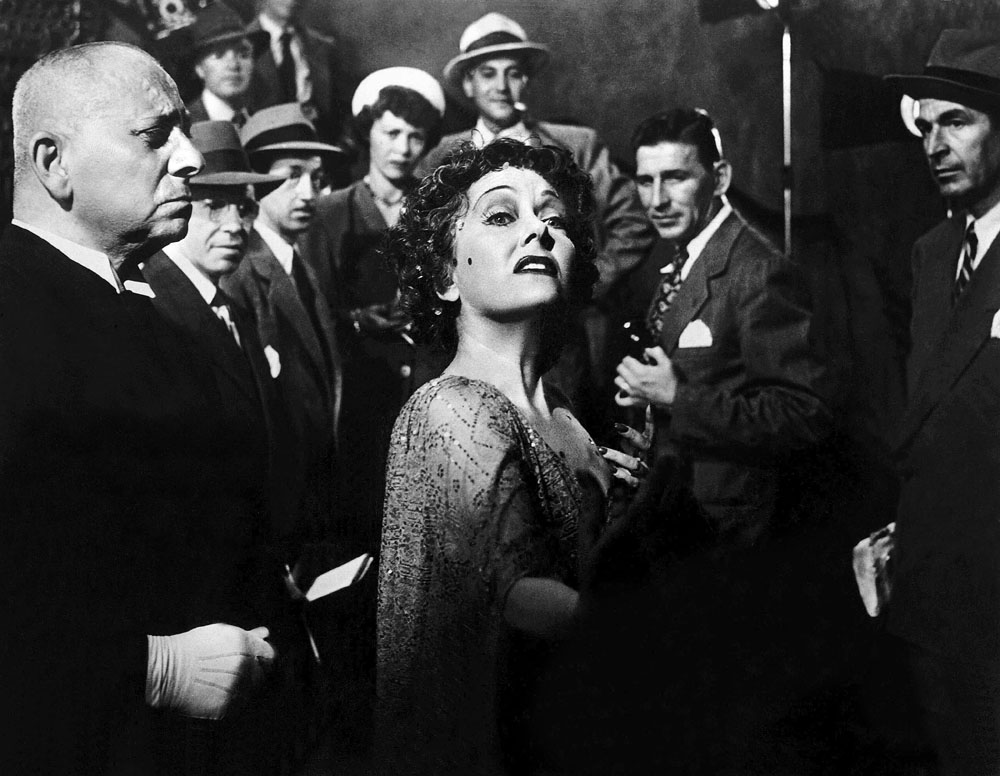
A demented, long-forgotten actress hides away in her mansion on Sunset Boulevard while an out-of-luck screenwriter makes a wrong turn down her ominous driveway. What follows is a savage look at the ageist Hollywood system, a sly satire on show business, and a darkly humorous film for anyone who’s clued into the internal mechanisms of Tinsel Town.
Set in 1950 Hollywood, now nearly 70 years later it’s a still-relevant look at how The Business treats its once-lucrative stars, the twisted egos that are produced and nurtured by it, and the awful reality of the Hollywood system that creates the entertainment that we watch from a distance in movie theaters and at home.
The story is just a place-setting for the rest of the film, which luxuriates on immaculate scene setups that accentuate the rotting decay of splendor that actress Gloria Swanson’s faded movie star character lives in. The overgrown shrubs, cracking pavement, and dilapidated majestic shrines to herself that detail her overblown Hollywood mansion contextually serves to make Norma Desmond–Swanson’s faded silent movie star character–more pathetic and alternately sympathetic despite her egomaniacal tunnel vision.
Meanwhile, the amorality of show business rears its head continually throughout the film, including aged studio executives that forget their contemporaries once they’ve stopped making them money and a sleazy screenwriter protagonist that half-heartedly resents his status as a kept man despite gleefully reaping the benefits that come with it. Maybe nobody’s the hero here; maybe this is a movie without heroes. As such, the film is a black-and-white affair that occupies a gray moral zone.
Sunset Boulevard was highly regarded upon its release and was nominated for 11 Academy Awards (and winning three: best original screenplay, set design, and score) and is rightly recognized as a classic American film. But there are a lot of classic films that haven’t aged well; this is one that still holds up as brand-new, even to modern audiences that are now separated nearly 70 years from its initial release.
7. All About Eve
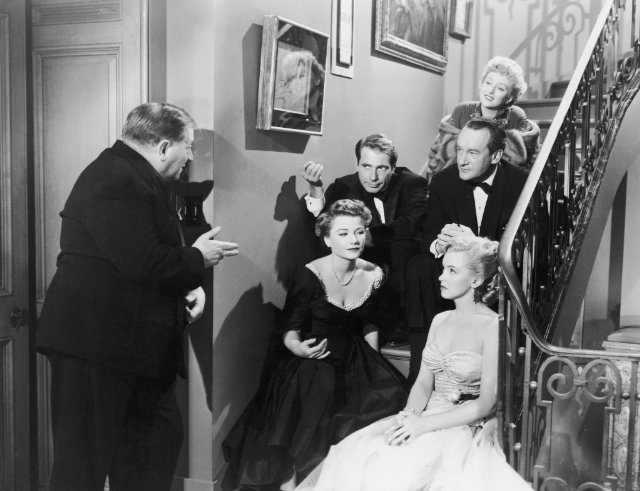
Speaking of show business intrigue and insane aging stars, All About Eve is another classic film about the business of show that doesn’t shy away from the ugly, ego-driven competition that the members of the theater subject themselves to–or are objectively subjected to in general.
It’s one of those fast-talking bits of Hollywood claptrap where show business–in this case, Broadway–is depicted as a relentless gauntlet of petty backstabbing and ruthless ladder-climbing, and as such this one’s a real corker. With a similar dramatic framing device as found in Sunset Boulevard, a showbiz professional provides narration that details the rise of the star of the hour, who is currently receiving an award on-stage.
Presented in a series of flashbacks, we get to know our main characters–including an aging and egocentric Broadway star Margo Channing (played by Bette Davis), theater critic and narrator Addison DeWitt (George Saunders), and the titular Eve (Anne Baxter), as the former and their coterie are deceived and overthrown by Eve through her two-faced manipulations to attain her own success in show business.
The dialogue is whip-smart and saucy while the amoral central character is just barely below the rest of the cast of characters to whom she ingratiates herself. Even though it is firmly of its time and place, this is a surprisingly subversive and adult film, complete with affairs, suggestions of sleeping one’s way to the top, and other nasty business. It’s clever and endlessly quotable (this is the film where the famous line, “Fasten your seatbelts–it’s going to be a bumpy night!” comes from). Even though it follows the standard melodrama structure of its time, its commentary on the nature of show business holds true today.
Released the same year as Sunset Boulevard, it seems like a lot of older writers and directors in the film industry had a few axes to grind about how things are run in that town, and much like its cinematic doppelganger, it garnered numerous Academy Award nominations that year–14, in fact, in a record that stood until 1997’s Titanic–winning 6, including Best Picture. A well-directed, quick-paced flick with snappy dialogue and a diabolical antagonist, it would be due for a remake–if only there was a way to improve on an this already stellar film.
8. The Manchurian Candidate
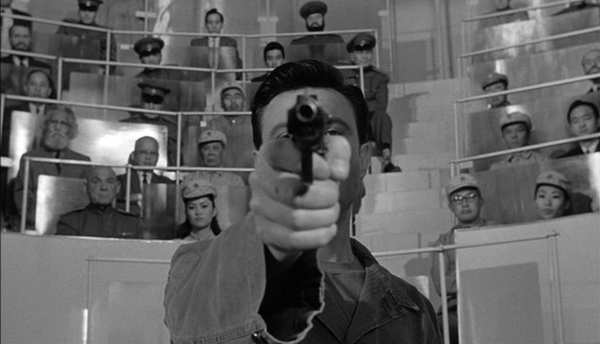
A conspiracy to assassinate a presidential nominee is underway, and only one man can stop…The Manchurian Candidate! Although (unsucessfully) remade in the 1990’s, the original The Manchurian Candidate is such a fascinating film that it works as both a historical piece and as a surprisingly modern film from 1962.
This movie–based on a book that was published in 1959–is a reflection of the paranoia of early-60’s Cold War fears. Taking place during the Korean War, a platoon of American soldiers are abducted by the Soviets to Manchuria in China, with all but two returned days later to the US front. One soldier, Raymond Shaw, is credited with saving their lives and the platoon’s commander, Bennett Marco (played by Frank Sinatra), who recommends him for the medal of honor.
And although the entire platoon dislikes Shaw for his various flaws, when asked about his character they all automatically give the same glowing answer about what a wonderful person he is. Once back in America, Marco continues to have the same nightmare where Shaw shoots and kills the two missing soldiers under the watchful eye of Soviet commanders. He begins investigating and finds that a fellow soldier from his platoon has the same recurring nightmare; what he eventually uncovers is a political conspiracy seeking to overthrow the US government.
Its conspiracy angle still appeals to modern film fans, and this film is an interesting relic from the height of the Cold War. However, what makes the film still hold modern audiences’ interest is in its artful approach to what at the time was considered far-fetched political conspiracy; that would change just a year later with the assassination of JFK and a newfound popular interest in conspiracy theories.
The strange, dream-like scenes of the brainwashing were similarly avant garde at the time of its release, and the psychological tension of the plot and disorientation of a brainwashed soldier is masterfully related by director John Frankenheimer and cinematographer Lionel Lindon. Although considered too weird of a film at the time of its release (it failed at the box office), history has been kind to this film and it is considered a classic–even an innovator–of political conspiracy films.
9. Jules and Jim
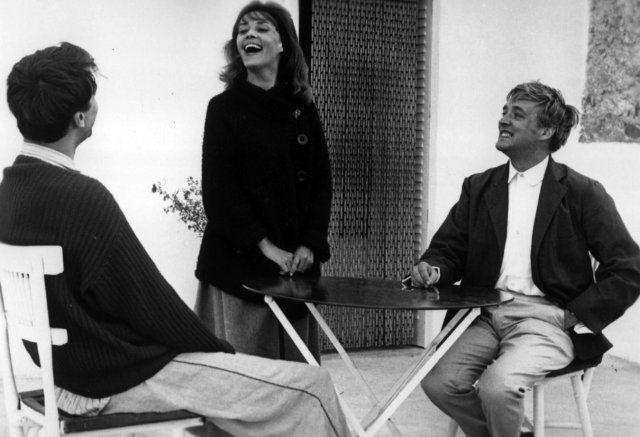
In the prudish year of 1962, three-way love affairs were not only uncommon in cinema but were a verboten subject. This changed with François Truffaut’s Jules and Jim. Set in pre- and post-WWI Europe, the film follows the lives of the titular two men, close friends who live a bohemian lifestyle before the war. While living an easy life and sharing women between them without envy or hesitation, they meet Catherine, whom both are interested in but Jules ends up marrying just before the war begins.
After the war, Jules and Jim reunite and, over mounting fears that Catherine will leave him, allows his wife and Jim to begin an affair and marry, and the three live together as man and man and wife. For a while, everyone is seemingly happy with this unusual arrangement, but this is soon followed by tragedy for all involved.
With such an outre premise, it’s a film that could have only been made in Europe at the time; upon its release, it was a major success, and has been often referred to as one of the finest films ever made.
It’s a remarkably fresh take on the nature of freedom and love that still comes across as new even today, and the audience is provided with characters who seem truly alive. Their liveliness is infectious, as is the French New Wave approach to cinematography, where scenes were shot with handheld cameras, giving the film a documentary-like feel. And with this approach, the freedom of youth and the encroaching sobriety of age are captured in this singular, remarkable film.
10. A Face in the Crowd
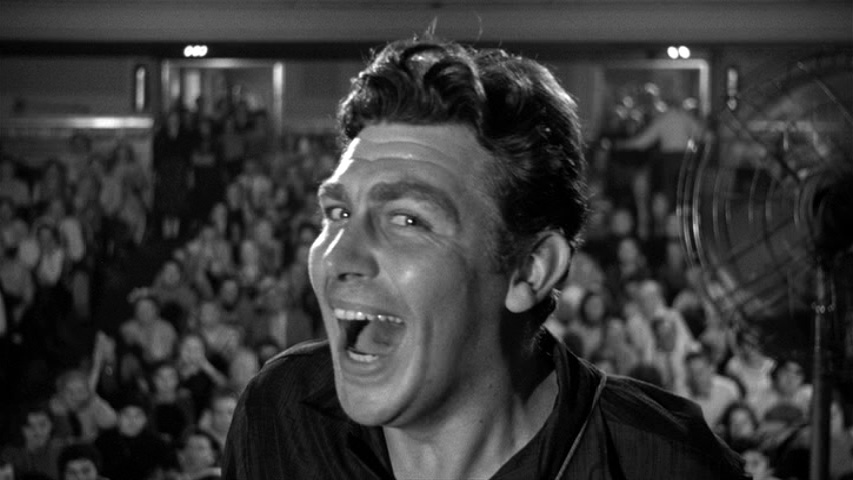
The rise of television and the world of 24-hour news in the past 60 years has inspired its share of demagogues and is a medium that both serves and creates egomaniacs. In Elia Kazan’s A Face in the Crowd, this type of egomaniac is found in Larry “Lonesome” Rhodes (Andy Griffith, in his film debut), who is found in a jail cell by a roving reporter who puts him on the radio. His natural charm and folksy manner gains him an enthusiastic following, eventually earning him a national television show.
However, Rhodes’ success starts to go to his head, making him cruel and egotistical, ruining both his personal and professional relationships in the process. While Rhodes gains his comeuppance publicly, the ending suggests that his career is far from over; meanwhile, he has lost the only people that actually cared about him.
Released in 1957, A Face in the Crowd was not particularly well-received. Perhaps it was the anti-hero protagonist or that it suggested TV personalities were different people than they portrayed on-screen. It found an enthusiastic champion in François Truffaut, who thought it was brilliant, calling it “passionate, exalted [and] fierce.”
As with many great films, opinion of A Face in the Crowd has been revised since its release, where it is now seen as a startlingly prescient film in modern times. As a film released 60 years ago, its insights into the power of mass media shaping popular opinion and–even more prescient–what it would do for swaying political opinion make it a salient film for the contemporary media-driven landscape that shapes popular opinion and perceptions.
Besides its plot’s content, Kazan’s directing and cinematographers Gayne Rescher and Harry Stradling, Jr, develop the film with long shots, crisp focus, and striking framing, providing the film with a cinematic flair that wouldn’t be out-of-place in a P.T. Anderson movie. A timeless film goes far beyond the constraints of its initial audience to become relevant to film connoisseurs generations long after its initial release, and this is a perfect example of the lasting impact of cinema, no matter its lack of color.
Author Bio: Mike Gray is a writer and academic from the Jersey Shore. His work has been featured on Funny or Die and Cracked, and he maintains a humor recap film blog at mikegraymikegray.wordpress.com.